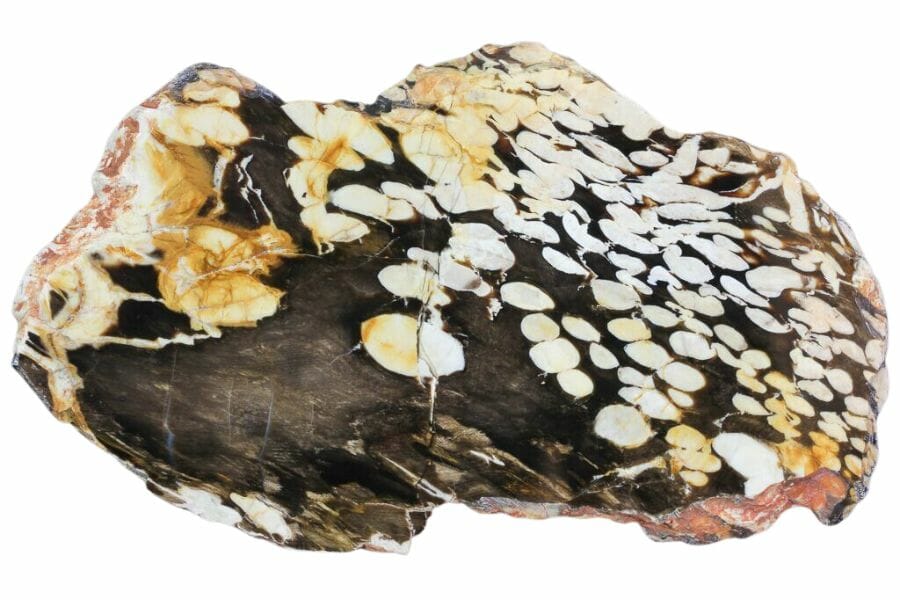Exploring the state’s rugged terrain offers a unique opportunity to discover petrified wood, a fossilized treasure from ancient forests. With the right tips, you’ll be ready to embark on your own adventure and uncover these fascinating remnants of prehistoric life.
Knowing where to look and what to expect will increase your chances of spotting these remarkable pieces scattered across this great state’s terrain!
Petrified wood you can find in the US
In the United States, several types of petrified wood can be found, each with unique characteristics based on the original tree species and the minerals involved in the fossilization process. Here are some of the types you’ll be able to find.
Araucarioxylon
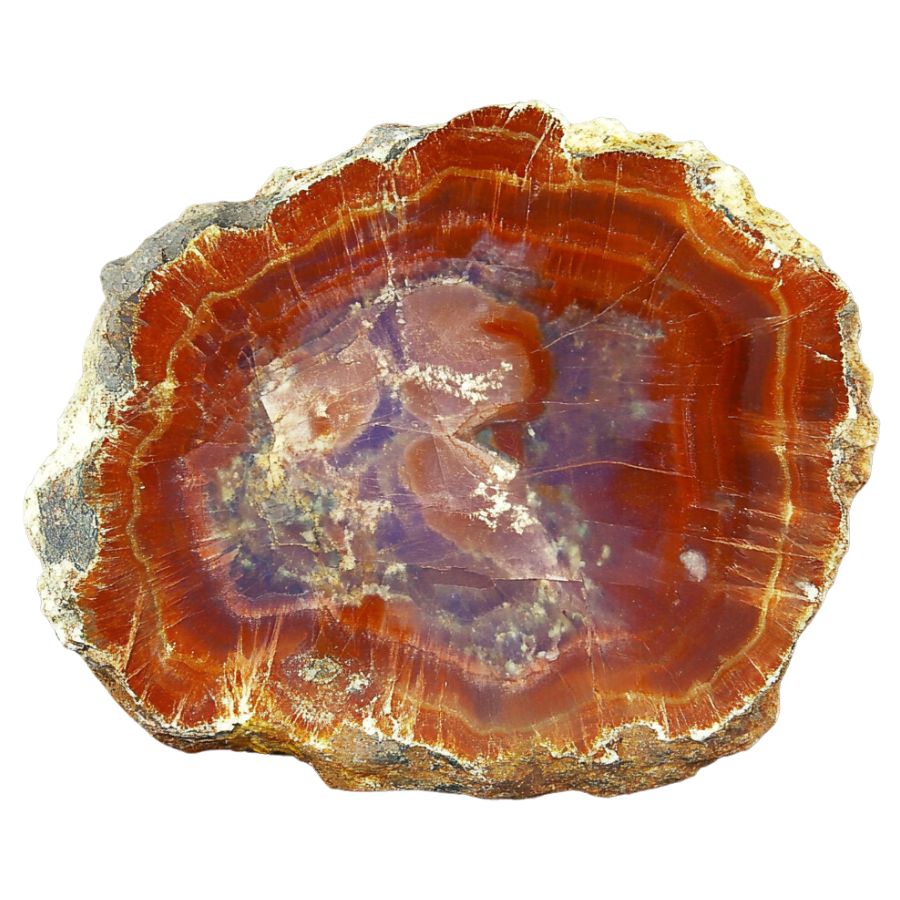
Found in the Petrified Forest National Park in Arizona, this is one of the most famous types of petrified wood. It comes from an extinct species of conifer. As Arizona’s state fossil, Araucarioxylon holds a special place in the state’s natural history.
These trees once formed vast forests during the Late Triassic period, about 225 million years ago. The vibrant colors in this petrified wood come from minerals that replaced the original tree material over time.
Metasequoia
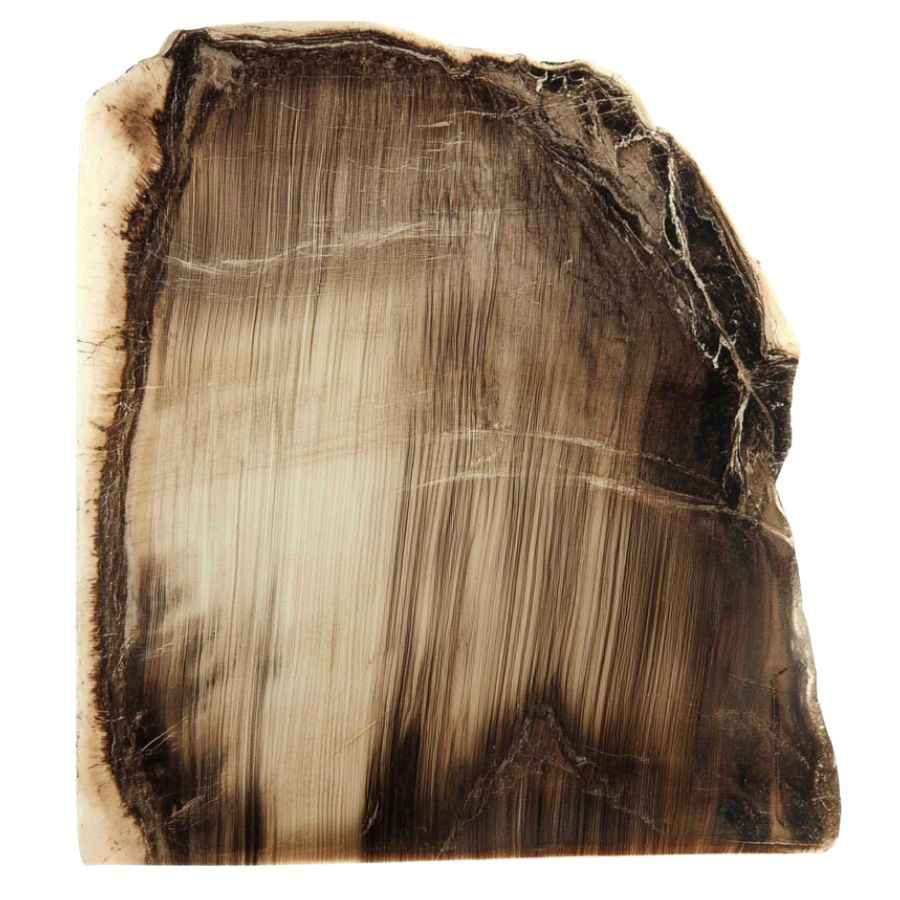
Often referred to as dawn redwood, this type of petrified wood can be found in various parts of the U.S., including the Pacific Northwest. Metasequoia was once thought to be extinct until living trees were later discovered in China.
Furthermore, its fine grain and reddish-brown color are characteristic features.
Palmoxylon
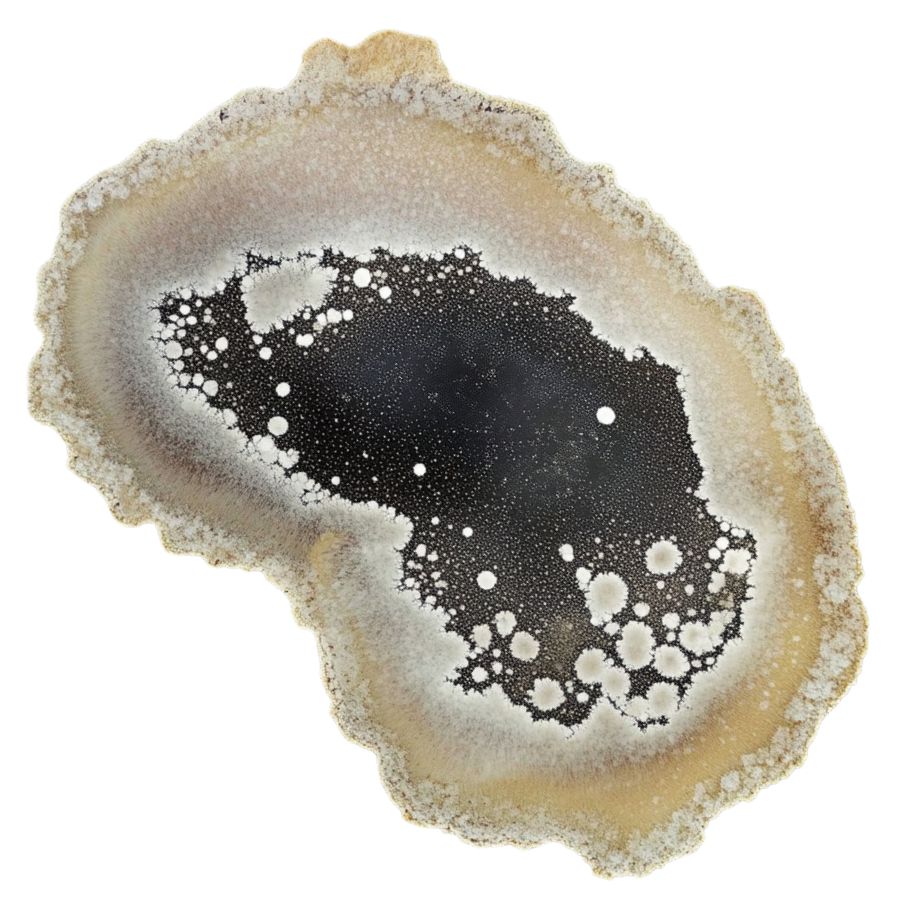
This petrified wood originates from palm trees and is often found in the Gulf Coast states like Texas and Louisiana. Recognized as the state stone of Texas, Palmoxylon is abundant and holds cultural significance.
The wood’s unique speckled or dotted pattern comes from the vascular bundles of the original palm tree. These fossils date back to the Cretaceous period, when the area was tropical and teeming with life.
Taxodium
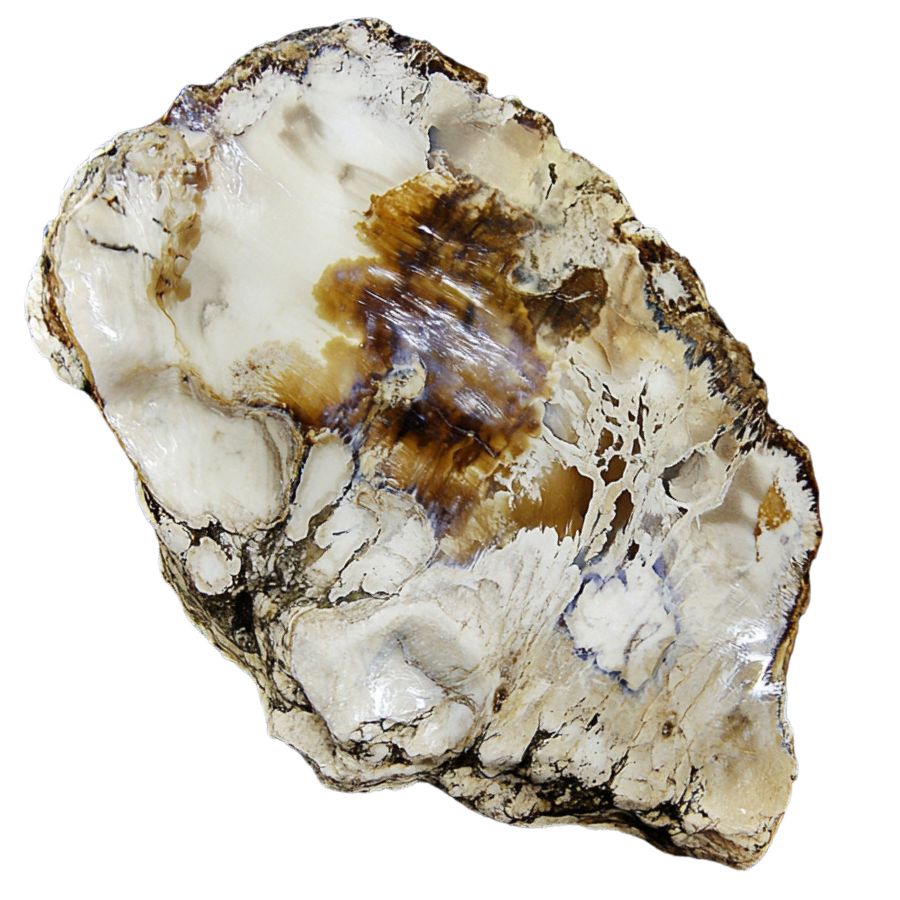
Also known as bald cypress, this petrified wood can be found in the southeastern U.S., particularly in areas that were once swampy. Taxodium wood is often found in places that were ancient swamps, where these trees thrived millions of years ago.
The wood is durable and shows intricate grain patterns, with growth rings and knotholes that tell the story of its long history. It’s a fascinating glimpse into the wet environments that once dominated the Southeast.
Sequoioxylon
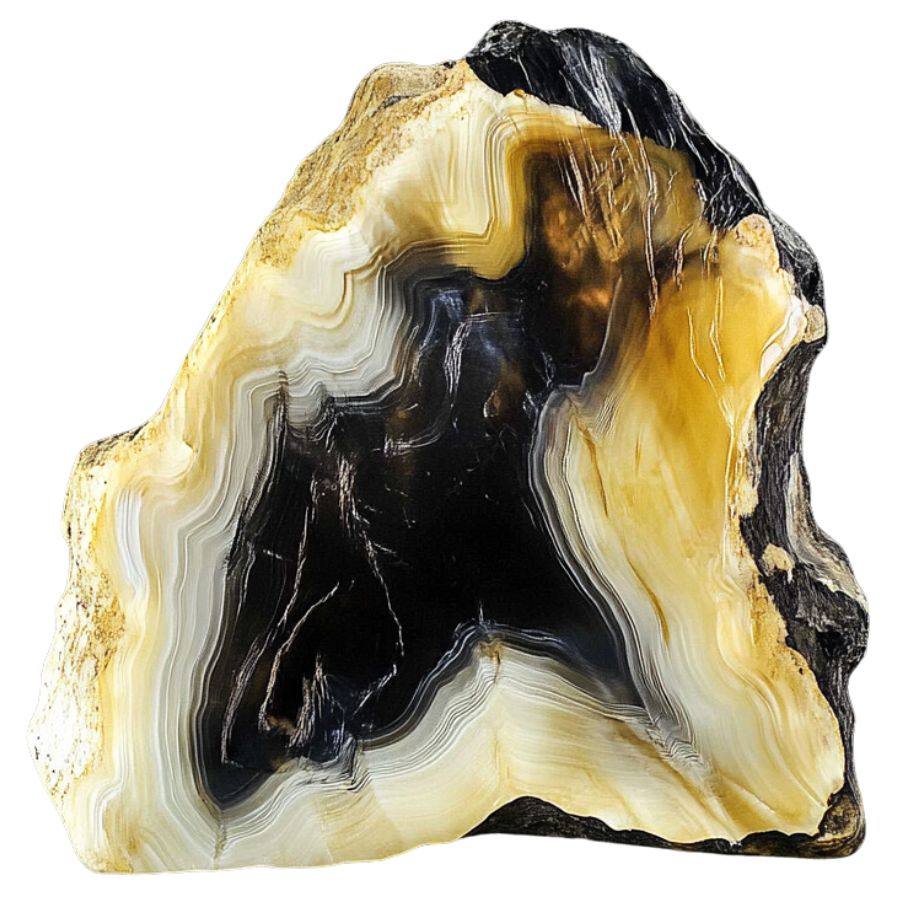
Petrified wood from ancient sequoia trees, found in places like California, where sequoia forests once thrived. These trees are the ancestors of the giant sequoias that still stand in California today.
The petrified wood is notable for its large, straight grain and reddish color, reflecting the immense size and age of the original trees.
Ginkgoxylon
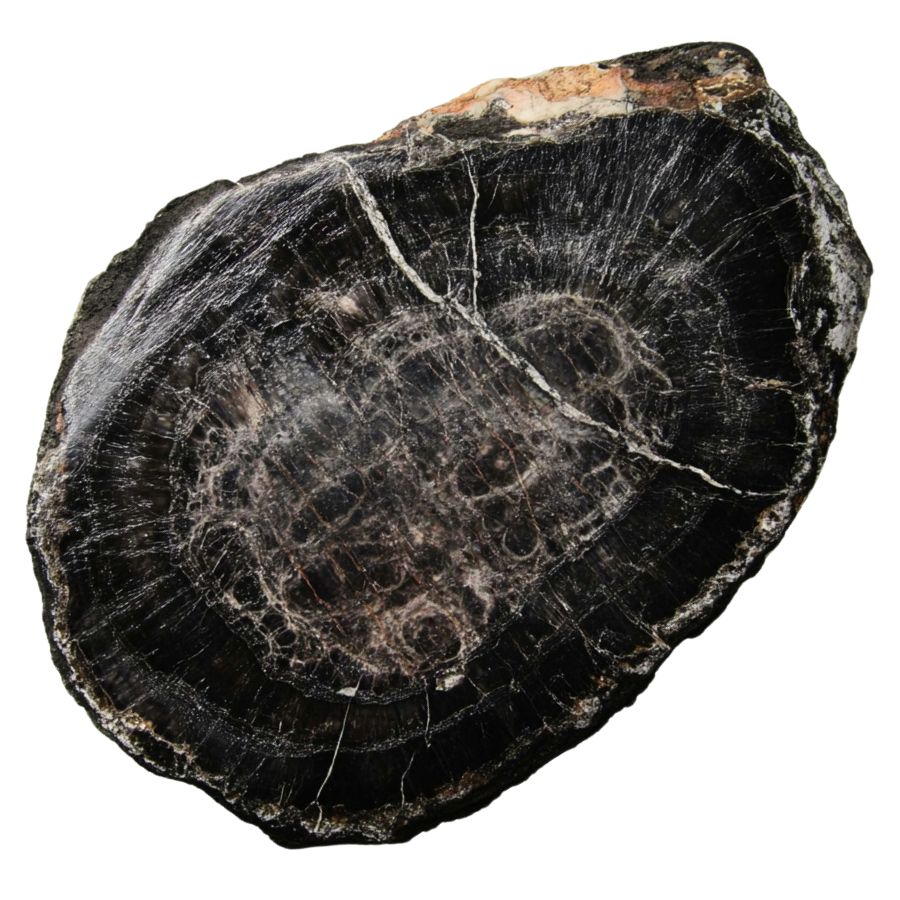
Petrified wood from ancient ginkgo trees, which can sometimes be found in states like Oregon and Washington. Ginkgo is one of the oldest tree species on Earth, with fossils dating back over 200 million years.
Ginkgo petrified wood often has a light color and may show patterns similar to the fan-shaped leaves of the living ginkgo.
Dicotyledonous Wood
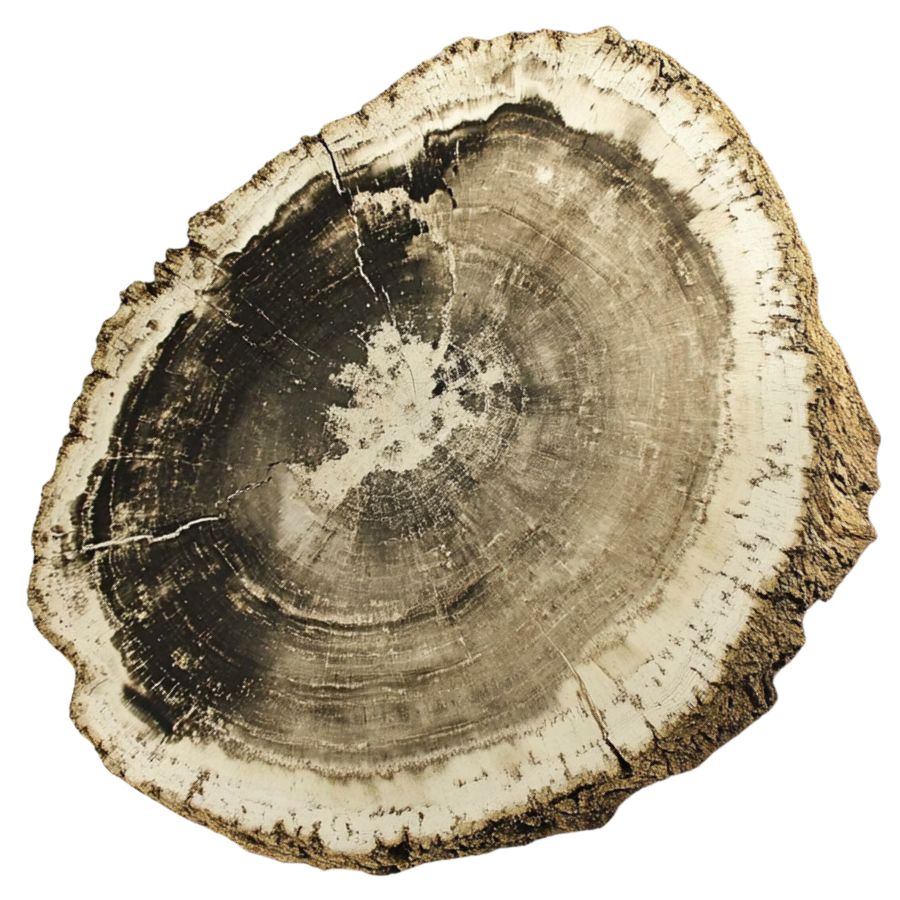
Found across various states, this type of petrified wood comes from broadleaf trees, making it more common and varied in appearance. You can spot dicotyledonous wood by the distinct vessels and growth rings that indicate seasonal changes.
This type of petrified wood is often found in regions that were once temperate forests, offering clues about the diverse plant life that existed millions of years ago.
Piceoxylon
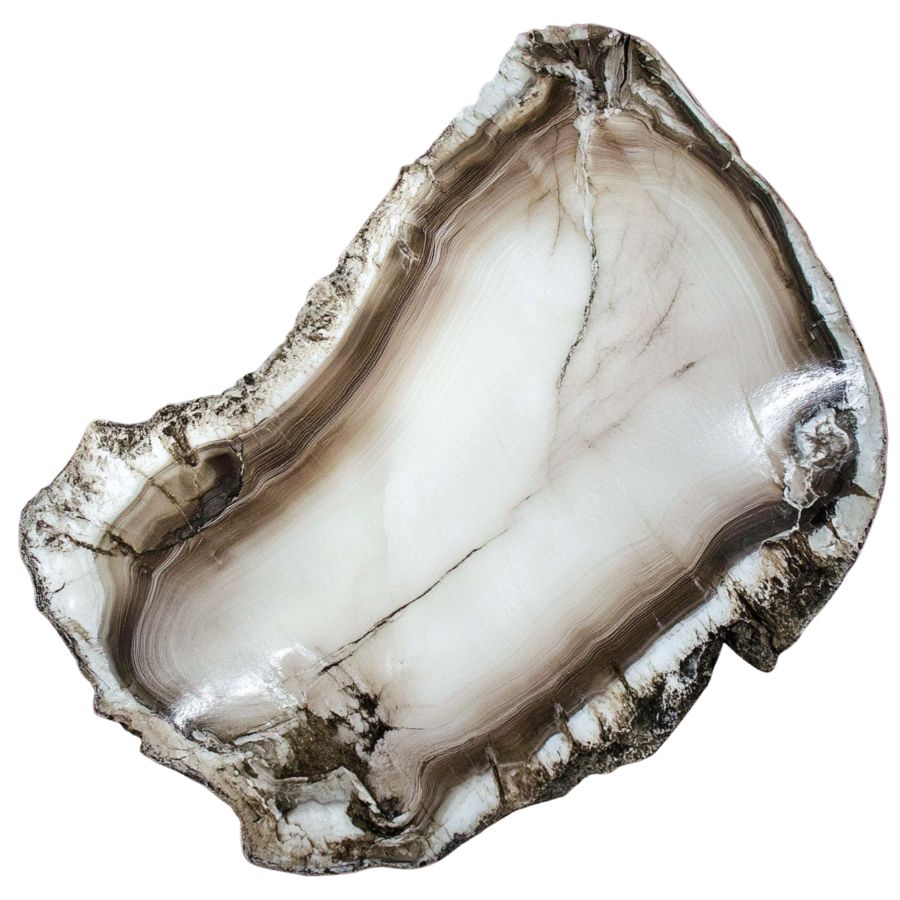
Petrified wood from ancient spruce trees, commonly found in areas like Wyoming and Montana, where coniferous forests once thrived. Piceoxylon is known for its straight grain and pale color, often showing growth rings that tell the tree’s life story.
These trees were part of the ancient boreal forests that covered large parts of North America during cooler periods.
A Quick Request About Collecting
Always Confirm Access and Collection Rules!
Before heading out to any of the locations on our list you need to confirm access requirements and collection rules for both public and private locations directly with the location. We haven’t personally verified every location and the access requirements and collection rules often change without notice.
Many of the locations we mention will not allow collecting but are still great places for those who love to find beautiful rocks and minerals in the wild without keeping them. We also can’t guarantee you will find anything in these locations since they are constantly changing.
Always get updated information directly from the source ahead of time to ensure responsible rockhounding. If you want even more current options it’s always a good idea to contact local rock and mineral clubs and groups
What Rough Petrified Wood Looks Like
Most of the photos you find of petrified wood are pieces that have been cut and polished. That is certainly useful but isn’t super helpful once you are out in the field. This is what you should look out for once you start hunting:
Exteriors like this
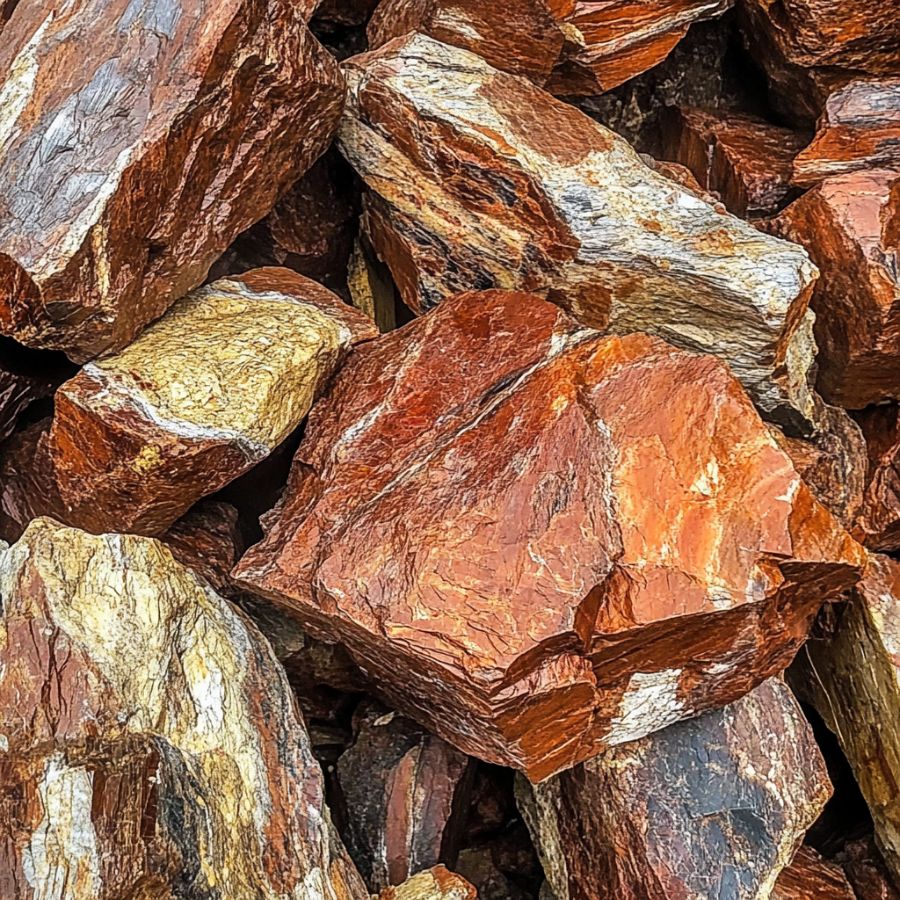
Every type of petrified wood has a different exterior and pattern but this is a good starting point on what to look for.
Texture and grain patterns
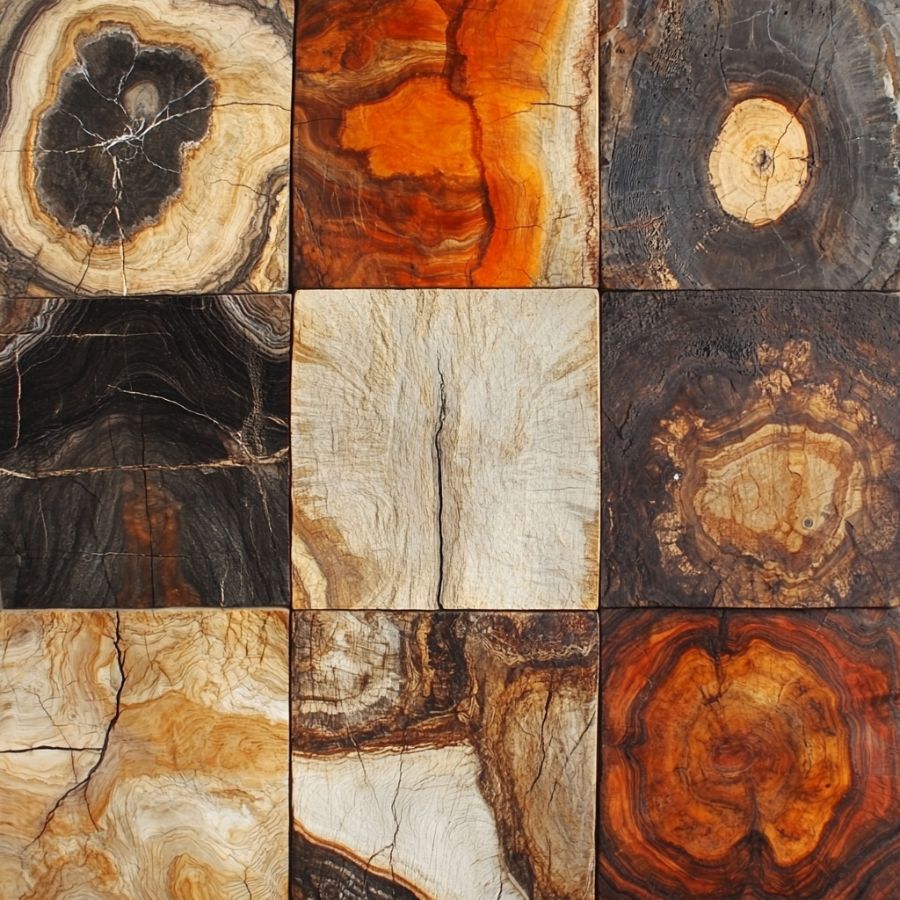
One of the most distinctive features to look for is the texture and grain patterns. Petrified wood often retains the original structure of the tree, including the grain, knots, and even growth rings. These patterns can appear similar to modern wood but are typically more rigid and fossilized.
Examine the surface for any linear patterns or striations that indicate the original wood grain. The texture may feel smoother or more polished in certain areas where mineralization has created a glassy effect.
Coloration and mineralization
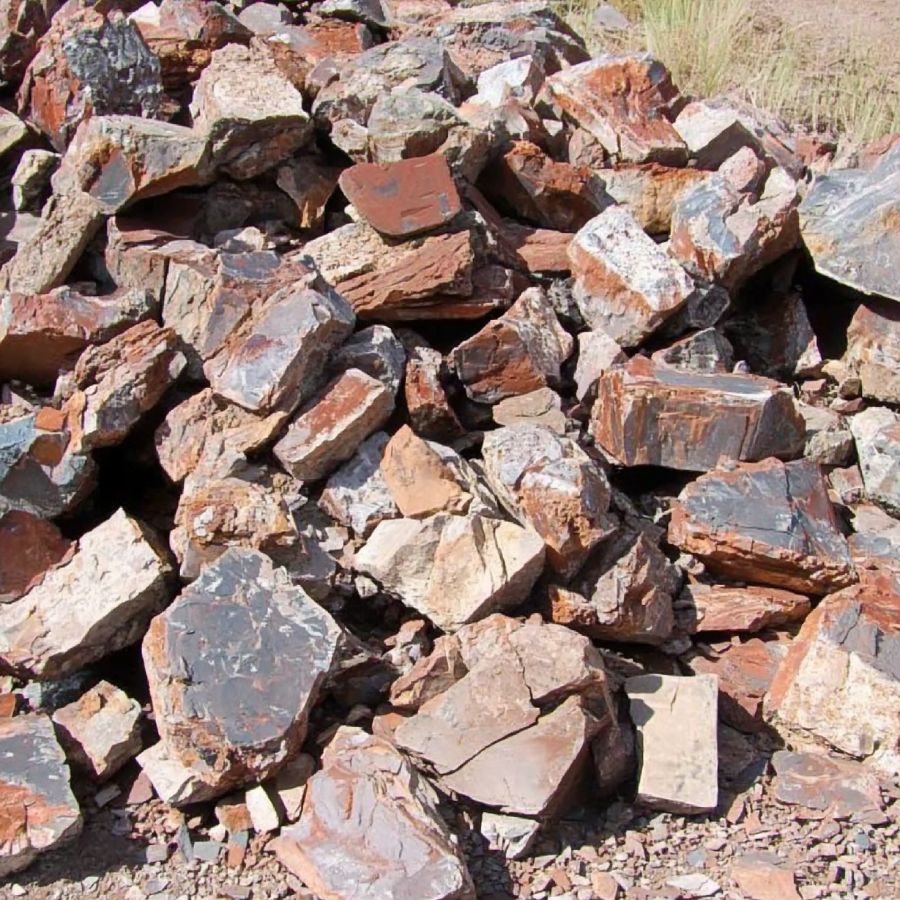
The color of petrified wood can vary significantly due to the minerals that replaced the organic material during the fossilization process. Common colors include shades of brown, red, yellow, orange, and black.
Some pieces might even exhibit multiple colors in intricate patterns. These colors are often more vivid and diverse than those found in regular rocks. When inspecting potential petrified wood, look for these distinct and varied hues, which can indicate the presence of different minerals such as silica, iron, manganese, and others that contributed to the petrification process.
Bark and exterior features
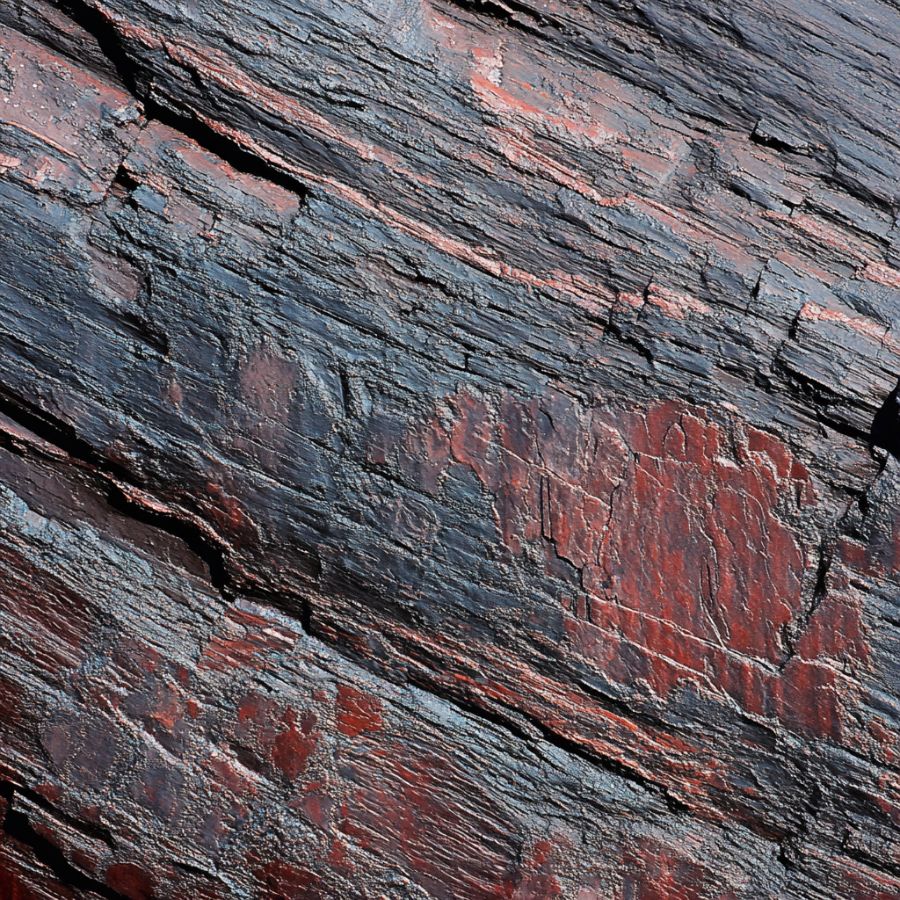
Another telltale sign of petrified wood is the presence of bark impressions or external textures that resemble tree bark. These features are often well-preserved and can include the rough, fibrous texture of bark, knots, or other surface irregularities typical of natural wood.
The exterior of rough petrified wood may also have a weathered appearance, with cracks and fractures that occurred as the wood fossilized over millions of years. Look closely for these natural wood features, as they can be a strong indicator that you have found a piece of petrified wood.
Weight and density
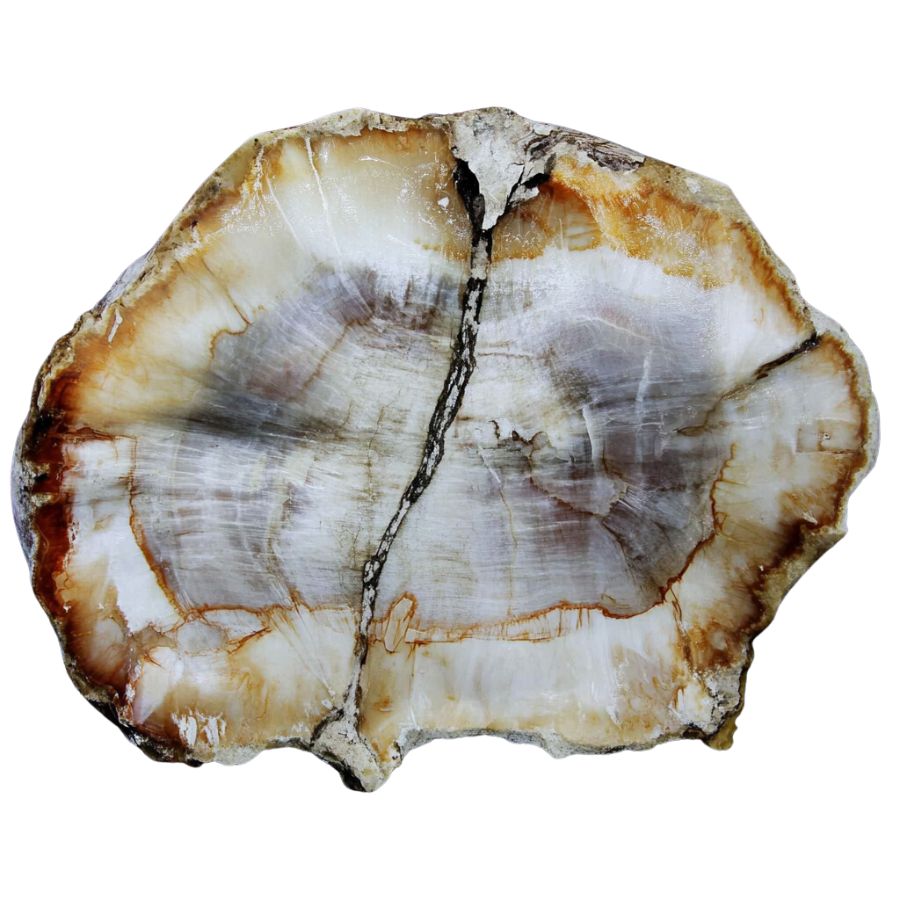
Petrified wood is typically much heavier and denser than regular wood due to the mineralization process. When rockhounding, pick up the specimen to feel its weight. Even small pieces of petrified wood will feel significantly heavier than an equivalent-sized piece of non-fossilized wood.
This increased density is due to the replacement of organic material with minerals, making petrified wood feel more like a rock than wood. Comparing the weight and density of your find with known samples of petrified wood can help confirm its authenticity.
- The extensive local experience of our team
- Input from a variety of local rockhounds and rockhound groups
- The difficulty in accessing a location
- Safety and potential hazards when collecting
- Private and public locations
- A desire to include locations for both the experienced and newbie hunters who are just starting out
Using these inputs we think we’ve put together the best list out there for those who love finding petrified wood for our collections!
General Areas To Try First
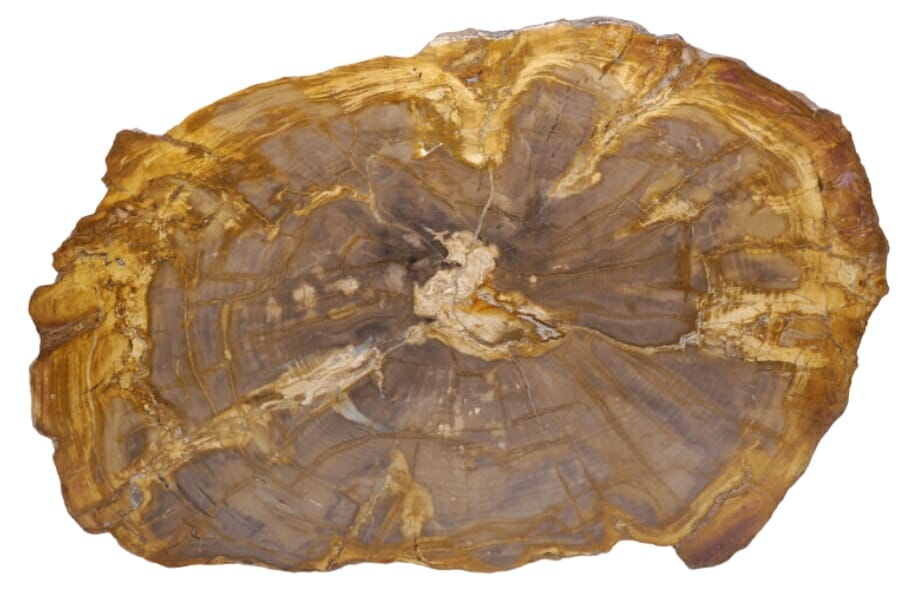
Before we get into the specific places you should be looking we wanted to give you some more general advice. Once you get to your hunting area you should head straight for these areas if you want to have the best results:
Lakeshores
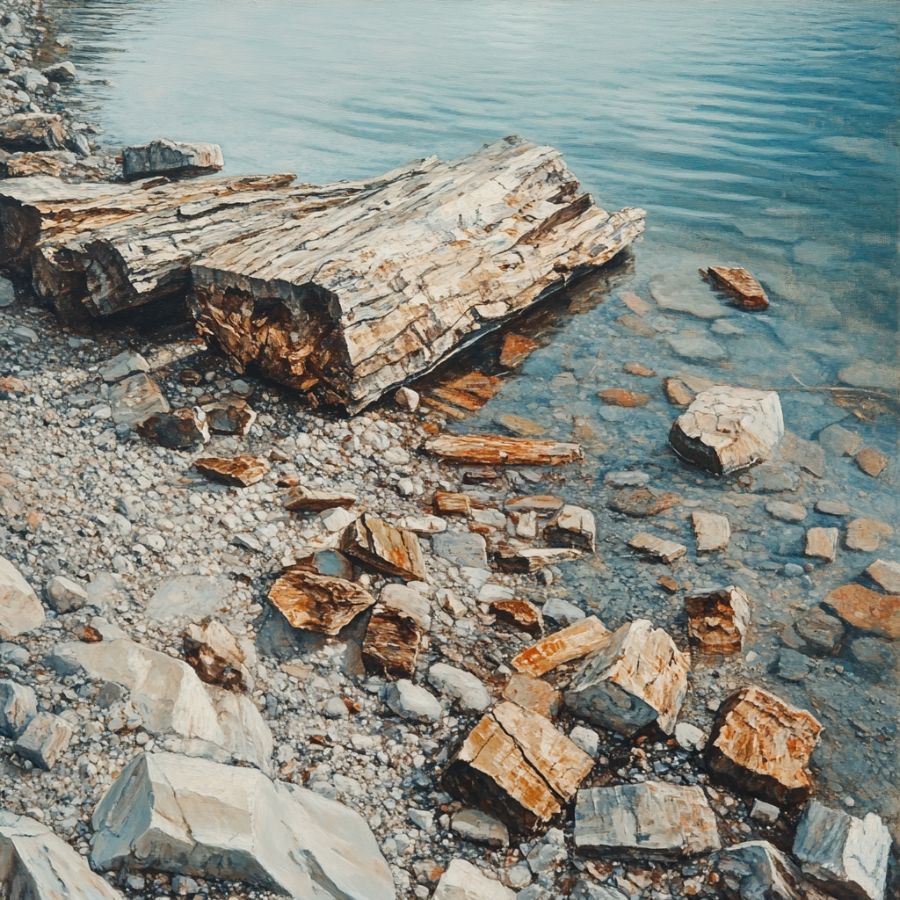
Lakeshores are like natural garbage cans because all things wash up and get left there over time. That includes wood that has turned to stone. As the water rises and falls, it carries sediment and rocks. It also takes the fossilized remains of trees from long ago.
Most lakeshores have a variety of rocks and minerals, which makes them an excellent place for petrified wood to grow and thrive. You’ll find a nice mix of sedimentary and volcanic rocks, the best sites for preserving wood fossils.
Roadcuts
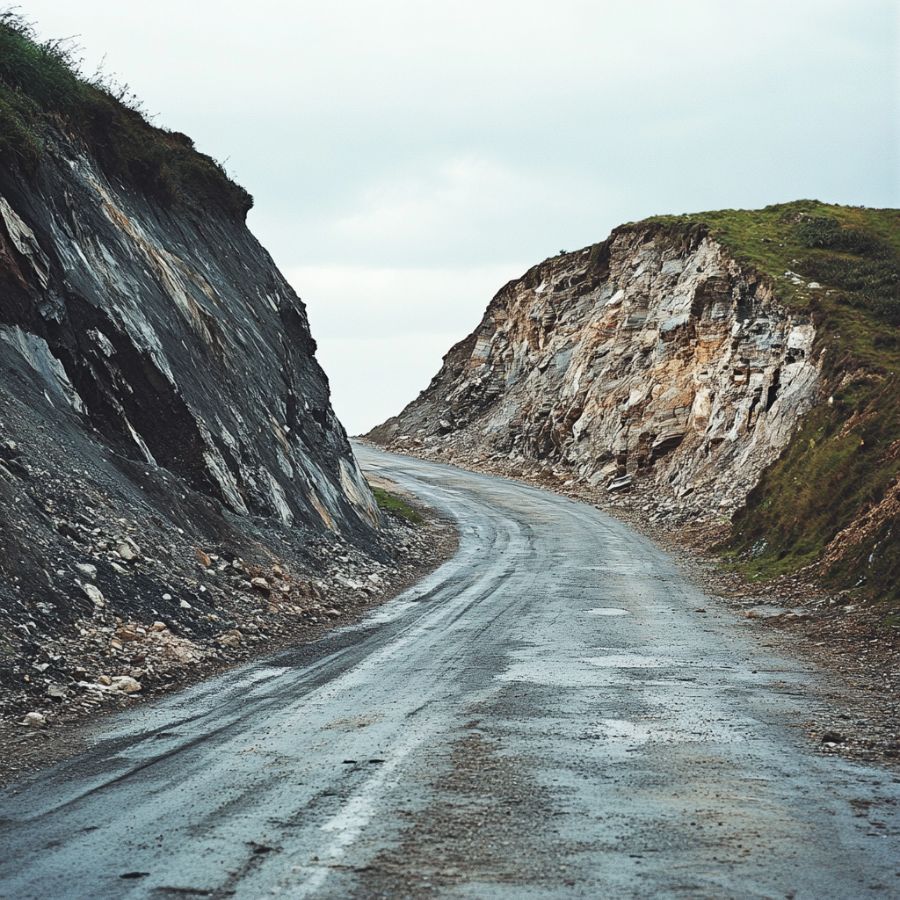
When building roads, parts of the ground are often cut away to make a smooth path. The magic happens when the road cuts through layers of rock and soil. Petrified wood is often buried deep underground, and roadcuts let us see these underground wonders.
As workers blast through the rock layers, they accidentally find petrified wood that has been there for hundreds of years. Petrified wood is easy for collectors to spot because the exposed rock layers of roadcuts make it easy to see its unique patterns and colors.
Streams and creeks
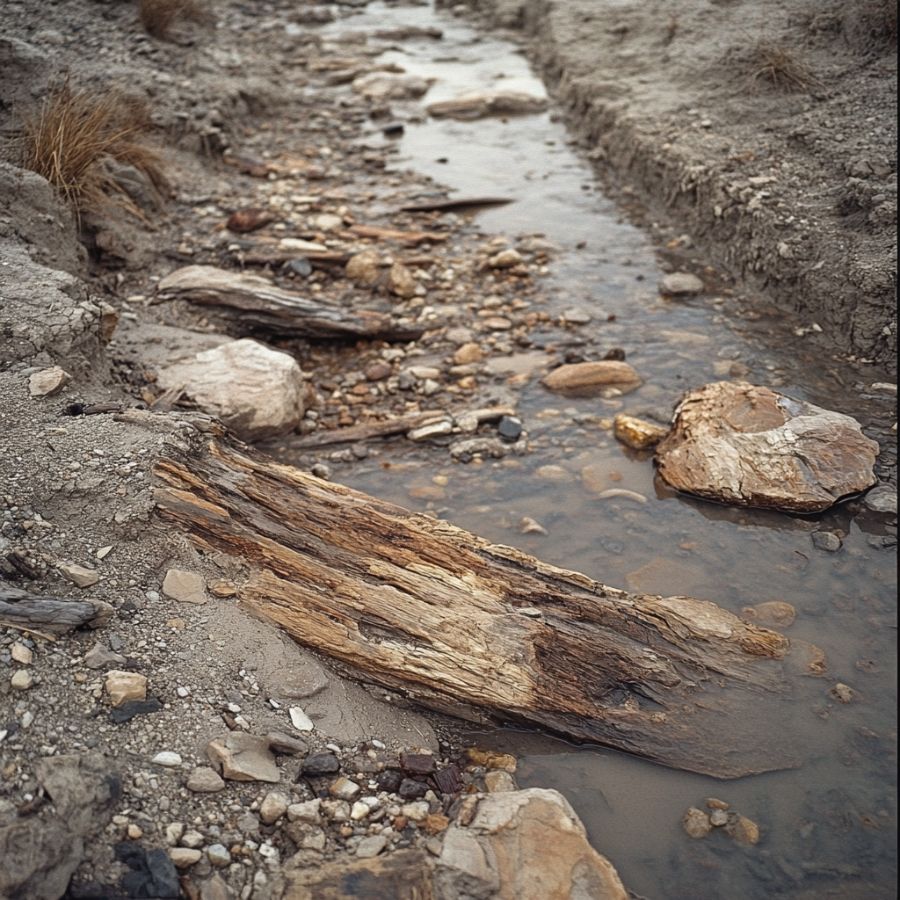
Streams and creeks can move loose sediment away, which can reveal old wood that has turned to stone. As the water moves around, it exposes small pieces or even more significant amounts of petrified wood that have settled on the streambed.
Streams and creeks are more accessible for collectors because they are not as big. You can easily walk along their banks, jump from rock to rock, and look for petrified wood at the water’s edge.
River beds
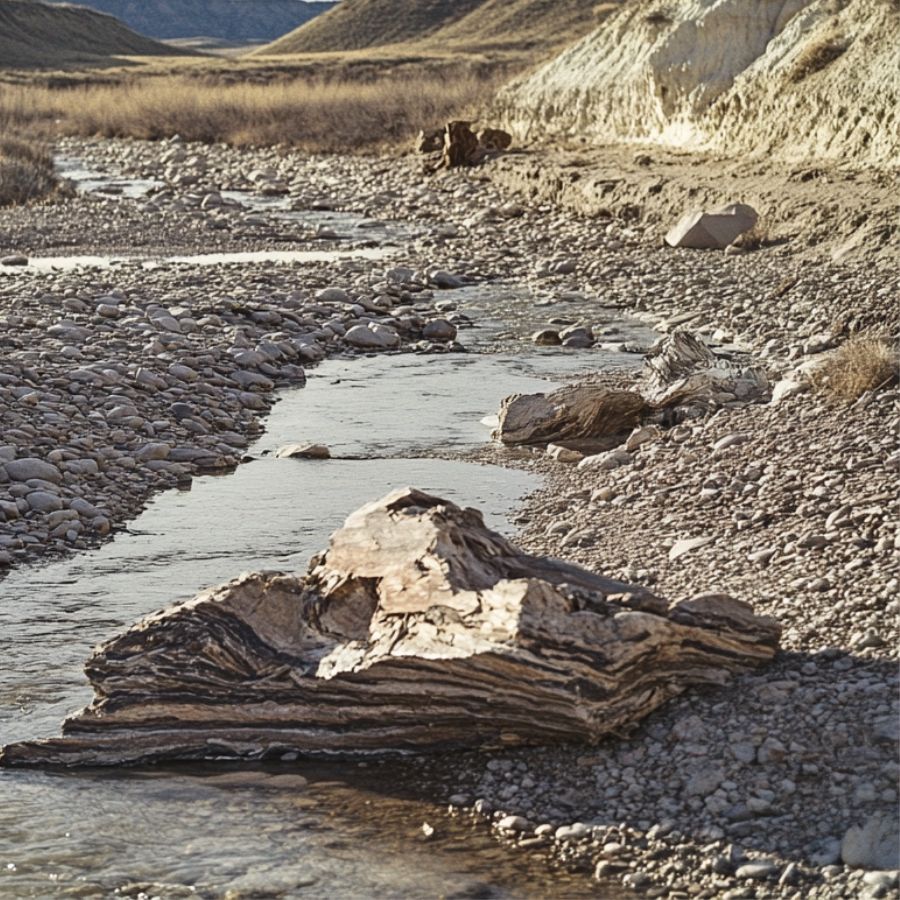
Riverbeds are excellent for finding petrified wood due to their unique geological and environmental conditions. Rapid burial by sediments like sand, silt, and mud protects fallen trees from decay, initiating the fossilization process.
Mineral-rich waters flowing through rivers facilitate the replacement of organic material with minerals such as silica, turning wood into stone. Over time, erosion exposes these buried treasures, making them accessible for discovery.
This dynamic environment, with constant sediment deposition and mineral infiltration, creates ideal conditions for the formation and eventual exposure of petrified wood.
DON'T MISS OUT ON ANY GREAT FINDS!
While you're out searching for Petrified Wood you're going to find A LOT of other interesting rocks and minerals along the way. The last thing you want to do is toss out something really interesting or valuable. It can be easy to misidentify things without a little guidance.
We've put together a fantastic field guide that makes identifying 140 of the most interesting and valuable rocks and minerals you will find REALLY EASY. It's simple to use, really durable, and will allow you to identify just about any rock and mineral you come across. Make sure you bring it along on your hunt!
The Best Places To Find Petrified Wood In North Dakota
Get ready for an adventure in the world of North Dakota rockhounding! One of the coolest treasures you can find here is petrified wood, ancient trees turned to stone over millions of years. See our top recommended locations below:
Always Confirm Access and Collection Rules!
Before heading out to any of the locations on our list you need to confirm access requirements and collection rules for both public and private locations directly with the location. We haven’t personally verified every location and the access requirements and collection rules often change without notice.
Many of the locations we mention will not allow collecting but are still great places for those who love to find beautiful rocks and minerals in the wild without keeping them. We also can’t guarantee you will find anything in these locations since they are constantly changing.
Always get updated information directly from the source ahead of time to ensure responsible rockhounding. If you want even more current options it’s always a good idea to contact local rock and mineral clubs and groups
Theodore Roosevelt National Park
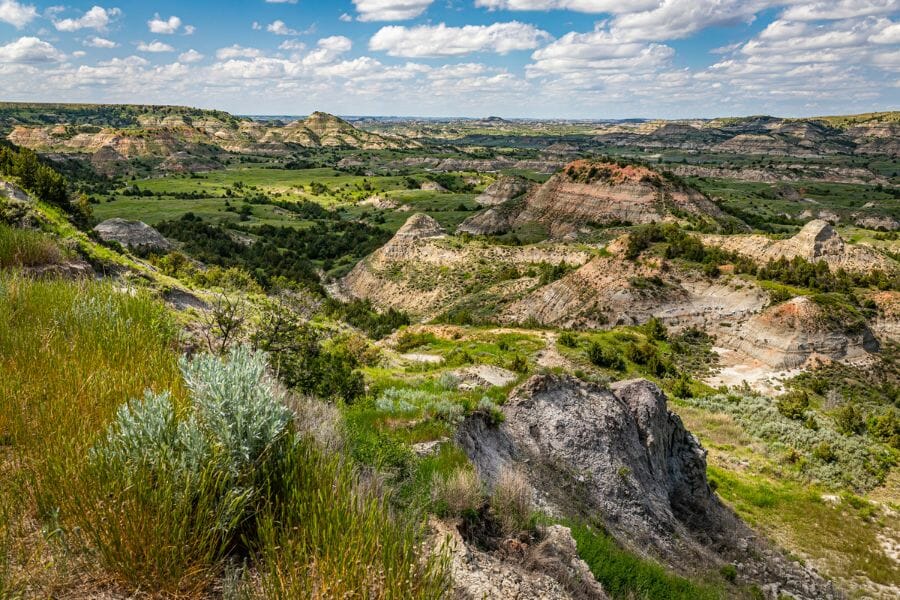
If you’re curious about where to find petrified wood, the Theodore Roosevelt National Park in North Dakota is a gem of a place! Spread out over three separate areas, the park covers over 70,000 acres.
The park’s landscape is a mix of rolling hills, rugged badlands, and peaceful prairies. These badlands are formed by erosion, which has created layered rock formations, deep canyons, and tall bluffs.
Also, the park has coal veins, colorful rocks, and even a petrified forest. These ancient, stone trees are evidence of the swamps and forests that were here millions of years ago.
Getting to Theodore Roosevelt National Park is a breeze. It’s right off Interstate 94, making it easy to reach by car. Once you’re there, you can explore scenic drives, hike on lovely trails, or simply enjoy the breathtaking views.
You might even spot bison, wild horses, or other wildlife that call this park home!
Before you go, make sure that you check with the Bureau of Land Management North Dakota Field Office to familiarize yourself with any rules and regulations that you’ll have to follow while rockhounding.
Where we found petrified wood at Theodore Roosevelt National Park
In the park, the South Unit is the place to go. There’s a special trail called the Petrified Forest Loop. This trail takes you through areas rich with North Dakota petrified wood.
As you walk, you’ll see ancient trees that have turned to stone over millions of years. These stone trees are a mix of colors, from deep browns to bright reds.
Cannonball River
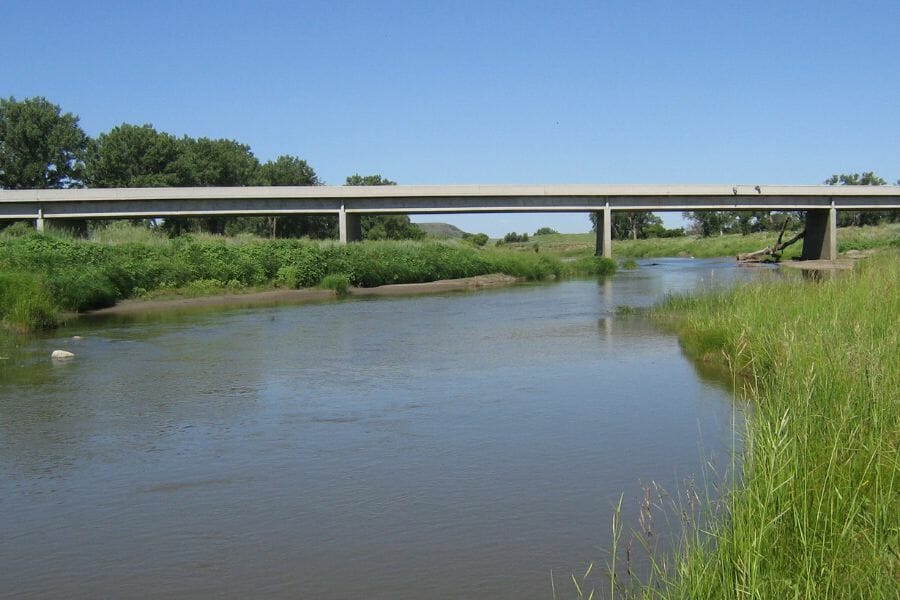
The Cannonball River is a fascinating spot in North Dakota! This river starts in the western part of the state and flows eastward until it joins the Missouri River.
Along its journey, it winds through diverse landscapes, from rolling prairies to rugged terrains.
One cool thing about the Cannonball River is its geology. The river has carved its path through layers of earth that have been around for ages. These layers reveal colorful rocks and even fossils from long ago.
The terrain around the Cannonball River is a mix of grassy plains and eroded hills. It’s a treat for the eyes and offers many opportunities for hiking and exploring.
Getting to the Cannonball River is pretty simple. There are roads and highways that lead to various points along the river. And once you’re there, you can enjoy fishing, camping, or just taking in the beauty of the landscape.
Where we found petrified wood along Cannonball River
In Grant County, specifically the New Leipzig area, start southwest towards the Cannonball River at the Hettinger County border. Move downstream southeast on both banks until you reach the mouth of the Cedar River.
In Hettinger County, near the New England area, you’ll want to explore upstream on both sides of the Cannonball River until you hit the Slope County border. Still in Hettinger, around the Regent area, begin your search 2 miles northeast.
Then, go downstream along both sides of a tributary of the Cannonball River and check out the adjacent hills. This leads you all the way to the mouth of this stream where it meets the Cannonball River.
Over in Slope County, near the Amidon area, collect along both sides downstream to the Hettinger County border. If you’re feeling adventurous, venture upstream towards the headwaters.
Stark County
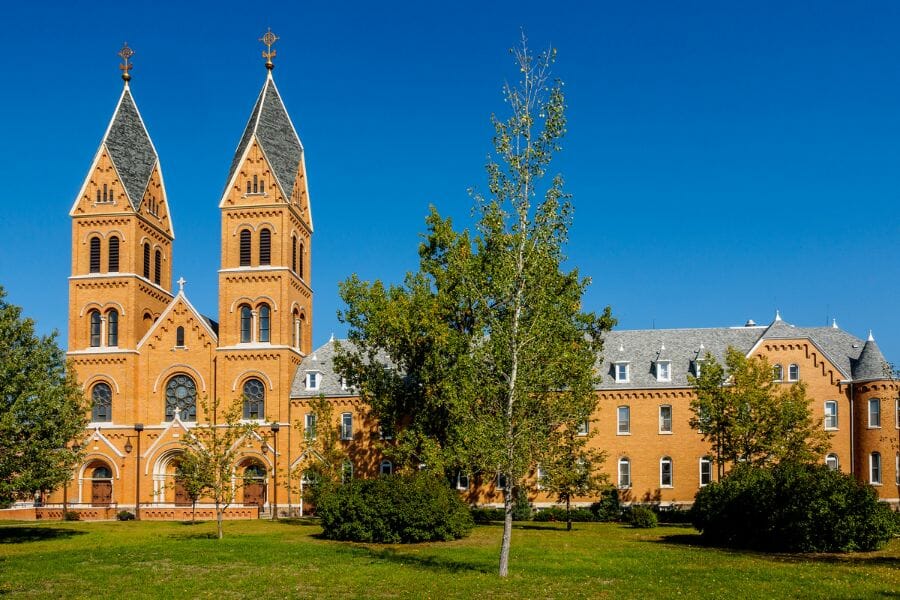
Stark County in North Dakota is a treasure for nature and rock lovers! Located in the southwestern part of the state, this county boasts a mix of landscapes.
From wide-open prairies to rolling hills, it’s a treat for the eyes. The terrain is a combination of grasslands, farmlands, and some rugged areas, perfect for hiking and exploring.
Geologically speaking, Stark County has layers of rocks and sediments from ancient times. These layers give hints of prehistoric oceans, swamps, and shifting landscapes.
For rockhounds, it’s a playground! You can find fossils, petrified wood, and other geological wonders that tell tales of a time long gone.
Major roads like Interstate 94 run right through Stark County, making it easily accessible by car.
The city of Dickinson, which is the county seat, is a popular stop for travelers. It offers amenities and serves as a gateway to the natural beauty of the region.
Where we found petrified wood in Stark County
In the Dickinson area, drive 6 miles north on SR-22. You might discover petrified wood on both sides of the road, especially as you reach the Dunn County border.
Head over to the Richardton area and start collecting. Travel 8.5 miles south on SR-8, and you’ll find treasures on both sides of the road, all the way to the Heart River.
And if you follow the Heart River, both upstream and downstream, there’s more petrified wood to be discovered lining the riverbanks.
From the Heart River, continue your search south all the way to the Hettinger County border, with plenty of chances to uncover fossilized wood.
Lastly, close to Dickinson, there’s a large gravel pit. This spot is known for revealing some fantastic petrified wood pieces.
Little Missouri River
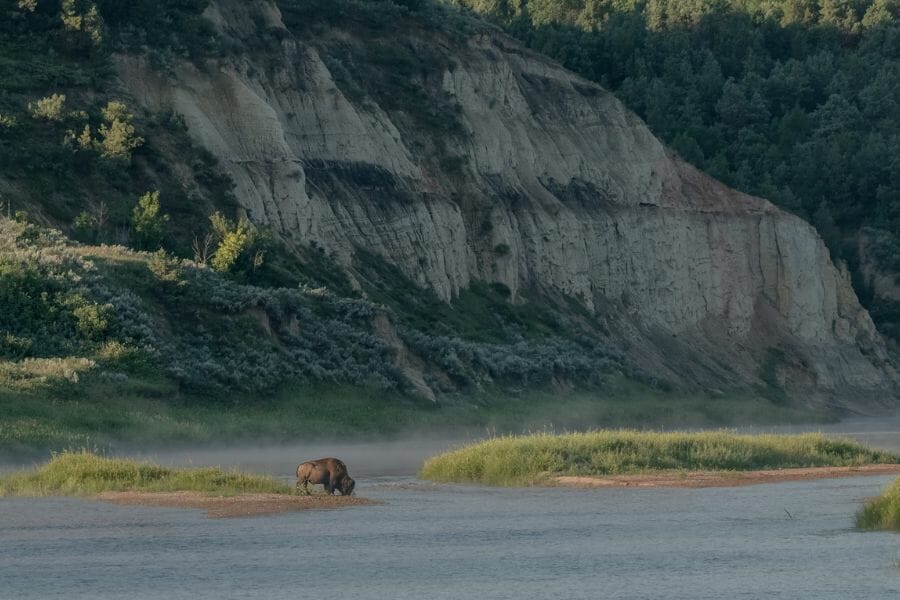
The Little Missouri River in North Dakota is a gem for those who love nature’s beauty. This river flows through the western part of the state, creating an inviting path through the Badlands.
Its winding waters stretch over a series of valleys, rugged cliffs, and breathtaking plateaus. It’s like the river drew a line through some of the most scenic landscapes North Dakota has to offer.
Geologically, the Little Missouri River has carved its way through layers of rock, revealing Earth’s history. These rocks showcase ancient times when seas covered the region.
The riverbed and its banks are teeming with a mix of colorful sedimentary formations. For rockhounds, this area offers opportunities to spot fascinating fossils and unique stone patterns.
There are many roads leading to different sections of the river. So, whether you’re setting out on a hiking adventure, keen to see what rocks you can find, or simply want a serene spot to relax, the Little Missouri River in North Dakota awaits you!
Where we found petrified wood along Little Missouri River
In the Watford City area, comb both banks of the river downstream until you hit the Dunn County border. If you’re feeling adventurous, also explore upstream, especially above the southwest boundary of the Theodore Roosevelt National Park, North Unit.
Over in the Marmarth area in Slope County, journey northward along both banks of the Little Missouri River.
Lastly, in Billings County, around the Medora area, direct your search northward along the east bank of the Little Missouri River. This stretch is known to house some great petrified wood specimens.
With these locations in mind, your rockhounding adventure by the Little Missouri River promises to be both fun and rewarding!
Mandan
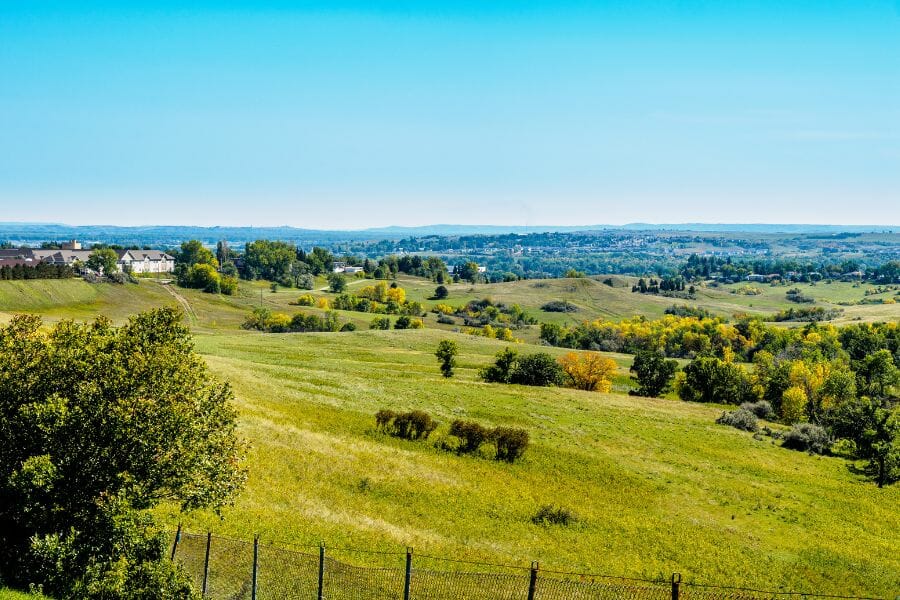
Mandan is a captivating city located just across the Missouri River from Bismarck, the state capital of North Dakota. Nestled on the banks of the river, Mandan serves as a gateway to some truly remarkable landscapes.
The terrain around this city showcases rolling plains that stretch as far as the eye can see, meeting the shimmering waters of the Missouri River.
Geologically, Mandan lies in an area rich with sedimentary rock layers, telling tales of ancient seas and prehistoric times.
For rockhounds, there’s a chance to discover fossils and unique stone formations, making it a haven for those curious about Earth’s past.
Reaching Mandan is a breeze. It’s conveniently connected by major roads like I-94, which runs right through the city.
The nearby Bismarck Airport also provides easy air access for those traveling from afar. Once in Mandan, there’s a blend of natural beauty and modern amenities, with parks, trails, and historic sites waiting to be explored.
Where we found petrified wood in Mandan
Head over to gravel pits in the Mandan area. These pits have a wealth of stones and among them, you can often spot chunks of petrified wood. As you search through the gravel, look for pieces with wood-like patterns and a stony feel.
Other Great Places To Find North Dakota Petrified Wood
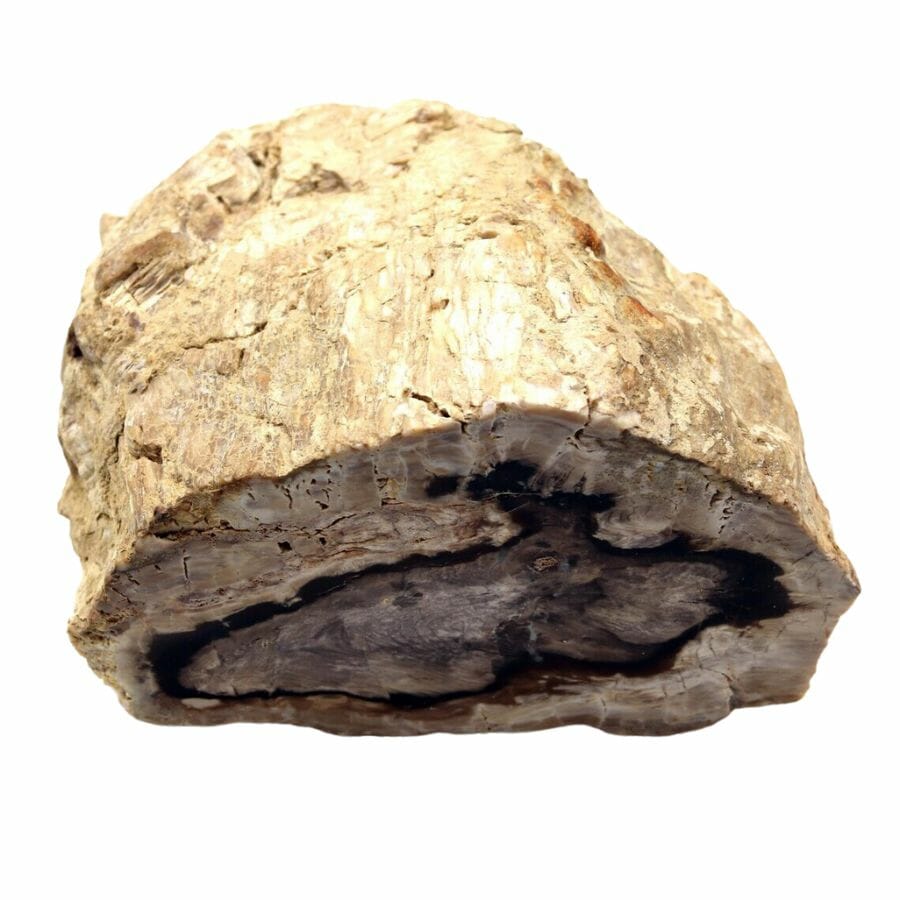
There are plenty of other spots that you can explore to look for petrified wood:
| County | Location |
| Adams County | Cedar River |
| Billings County | Medora Badlands |
| Billings County | Canyons to the south of Medora |
| Burleigh County | Cannonball Formation in the Bismarck area |
| Dunn County | Marshall area |
| Dunn County | Taylor |
| Golden Valley County | Beach |
| Grant County | Delta between the Cannonball River and Decar River in the Raleigh area |
| Hettinger County | Mott area |
| Hettinger County | Hills flanking the Cannonball River in the Regent area |
| McKenzie County | Tobacco Garden Creek in the Watford City area |
| McKenzie County | Searing |
| Morton County | Glen Ullin |
| Pembina County | Abandoned limestone quarry |
| Pembina County | Deltas of the Pembina, Elk and Sheyenne rivers |
| Ramsey County | Devils Lake shorelines |
| Ramsey County | Devils Lake dry-land gravel beds |
| Ramsey County | Dry Lake shorelines in Webster |
| Ramsey County | Sweetwater Lake shorelines in Webster |
| Ramsey County | James River and Sheyenne River gravel bars |
| Ransom County | Anselm area |
| Ransom County | Sheyenne River |
| Rolette County | Dunseith area gravel pits |
| Slope County | Amidon |
| Ward County | Minot area gravel pits |
| Williams County | Little Muddy River in the Appam area |
Common Questions About Finding Petrified Wood In North Dakota
Learn the answers to the most common questions about petrified wood:
How old is petrified wood in North Dakota?
Petrified wood in North Dakota is like a time capsule, taking us back millions of years! Most of this fossilized wood dates back to the Paleocene epoch, which means it’s between 55 to 65 million years old.
Back in the day, North Dakota was covered with dense forests. Over time, trees fell and got buried under sediment. With the right mix of minerals, water, and time, the wood’s organic material slowly got replaced by minerals.
When you pick up a piece of petrified wood from North Dakota, you’re holding a relic from a time when dinosaurs had just become extinct, and the age of mammals was starting. It’s a real-life connection to an ancient world!
Can you find petrified palm wood in North Dakota?
Petrified palm wood is a really fascinating type of fossilized wood, but I have to tell you that it’s not something you’re likely to find in North Dakota. Instead, petrified palm wood is more commonly found in places like Texas and Louisiana.
In North Dakota, the geology and ancient climate were different, so the types of trees that grew there were not the palm trees we might think of today.
The petrified wood you might find in North Dakota comes from ancient forests that were home to different types of trees, like cypress and redwood, but not palms.
The Best Places To Buy Petrified Wood In North Dakota
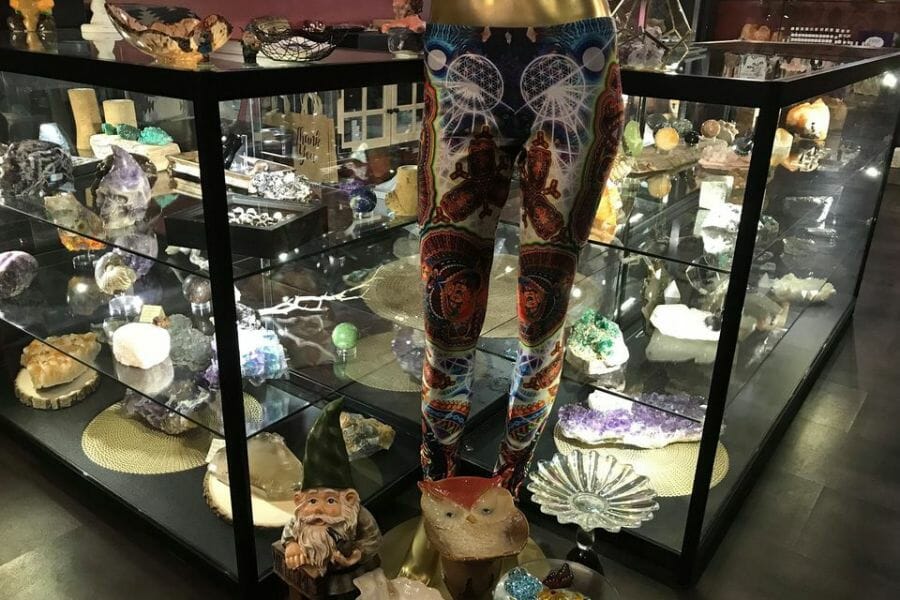
If you’re not up for exploring, you can still get your hands on a nice piece of petrified wood. You can find some great specimens in these shops:
- Treasures of Sea & Earth – 609 Memorial Hwy, Bismarck, ND 58504
- Crystal Rock Healing Products – 4950 13th Ave S #19, Fargo, ND 58103
- Gnome’s Nook – 14 8th St,Fargo, ND 58103

